
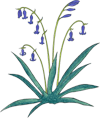
Double Plots
Choose one tree from List A or B or C:Double plots comprise two graves side by side, with one tree planted after the second burial.
OR a Double Plot may be purchased for one grave only, with one tree planted after that burial.
List A
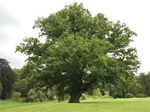 Oak (Sessile oak) - Quercus petraea
Oak (Sessile oak) - Quercus petraea Large, domed tree growing in woodlands or fields. Acorns produced in September, feed mice and voles when they fall. Timber traditionally used for building and charcoal, and its bark for leather-making due to its high tannin content. Oaks sustain a larger variety of insects and invertebrates (up to 500 different species) than any other tree.
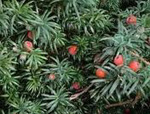 Yew - Taxus baccata
Yew - Taxus baccata Evergreen tree growing in woods. Bright red berries (poisonous to us but loved by birds) produced in August. Its orange/yellow wood was used traditionally for making longbows, and is prized by wood turners. Good dense cover for nesting birds.
 Alder - Alnus glutinosa
Alder - Alnus glutinosa Dark green, round leaves. Clusters of cone-like catkins stay throughout winter, and are eaten by finches. Its yellow wood was traditionally used to make clogs. Thrives near rivers or in damp woodland.
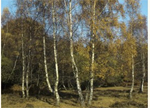 Silver Birch - Betula pendula
Silver Birch - Betula pendulaSmall pointed leaves turning golden in autumn. Attractive, white papery bark. Traditionally coppiced in woodlands and used for making furniture, and its brushwood used to make horse jumps.
Single Plots - choose from List B or C:
List B
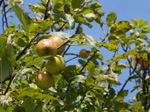 Crab Apple - Malus sylvestris
Crab Apple - Malus sylvestris Growing in woods and hedgerows, it has mid green oval leaves, with clusters of white/pink flowers from April. Yellow fruit (crab apples) in autumn, eaten by birds and insects, and traditionally used for jellies and wines. Wood used for carving.
 Hawthorn - Crataegus monogyna
Hawthorn - Crataegus monogyna Common in hedgerows where it makes good nesting sites for birds. Dark, olive-green, toothed leaves, with spiny branches. White scented flowers in May ( ' May blossom ' ) turn to red berries in September.
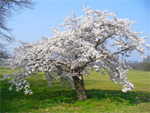 Wild Cherry - Prunus avium
Wild Cherry - Prunus avium The most ornamental of our native broadleaf woodland trees, with white blossom in April. The second part of its botanical name - avium refers to birds, who eat the cherries and disperse the seed.
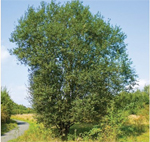 Goat Willow - Salix caprea
Goat Willow - Salix caprea Goat willow, also known as pussy willow after the silky grey male flowers, which resemble a cat's paws. Catkins provide an important early source of pollen and nectar for bees and other insects, and birds use goat willow to forage for caterpillars and other insects.
 Rowan - Sorbus aucuparia
Rowan - Sorbus aucuparia Also known as the mountain ash, due to the fact that it grows well at high altitudes and its leaves are similar to those of the ash. Creamy flowers in Spring, followed by profusion of red berries in Autumn which provide rich source of food for birds.
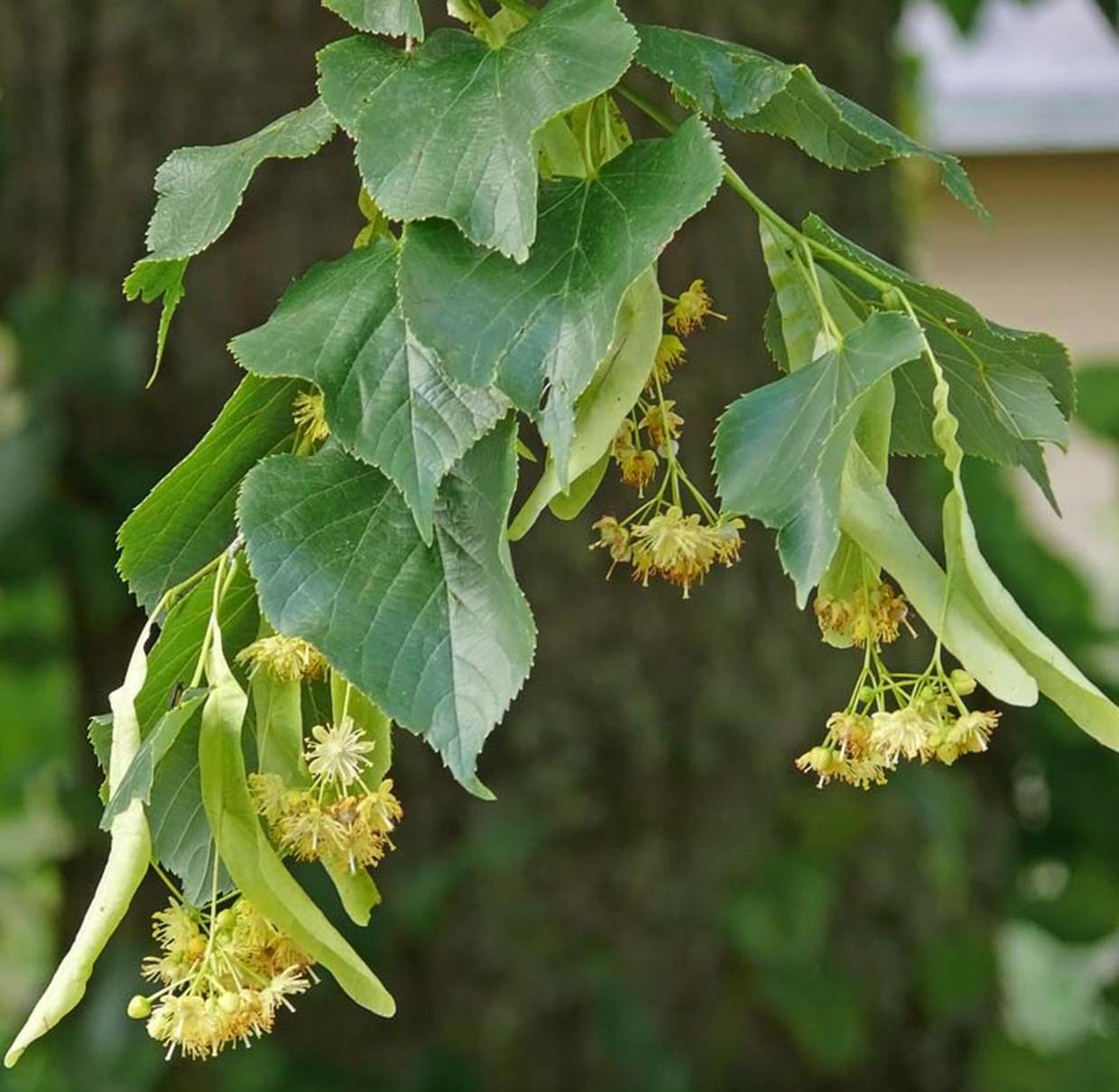 Small-leaved Lime - Tilia cordata
Small-leaved Lime - Tilia cordata Native deciduous tree with heart-shaped leaves and heavily-scented yellow flowers, which attract many insects and in particular bees. Lime wood is fine-textured and does not warp; it is still used today to make sounding boards and piano keys.
Supplementary List - these are smaller trees or shrubs, which may be chosen for planting on either Single or Double Plots.
List C
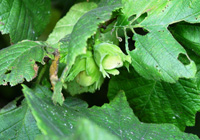 Hazel - Corylus avellana
Hazel - Corylus avellana Common in hedgerows and woods, sometimes coppiced. Deciduous with catkins in spring, lasting to autumn, when nuts appear. Wood used to make walking sticks.
 Blackthorn (Sloe) - Prunus spinosa
Blackthorn (Sloe) - Prunus spinosaGrows in hedgerows and on the edge of woodland. Has small leaves and thorns. White flowers in March turning to black berries (sloes), loved by birds. Good for nest-building. Black Hairstreak butterfly lays its eggs on it.
Buckthorns:
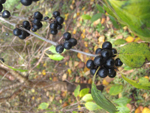 Purging buckthorn - Rhamnus cathartica
Purging buckthorn - Rhamnus cathartica Mid-green oval leaves bear green/white flowers in May. Red berries turning to black in September.
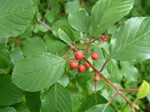 Alder buckthorn - Frangula alnus
Alder buckthorn - Frangula alnus This has darker glossy leaves, and bears red berries after the green flowers in May . Both buckthorns are used by the Brimstone butterfly for laying its eggs thus providing food source for its caterpillars.
 Spindle Tree - Euonymus europaeus
Spindle Tree - Euonymus europaeus Grows in woodlands, leaves slim and pointed. Delicate pale white/green flowers in May, turning to red berries in September. Good autumn leaf colour too.
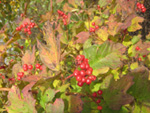 Guelder Rose - Viburnum opulus
Guelder Rose - Viburnum opulus Found in woods and hedgerows, vine-shaped leaves. White flower heads in June, with clusters of red berries in September, remaining after leaves have fallen. Good autumn leaf colour.
Click here for a printable version of this page.
Back to top